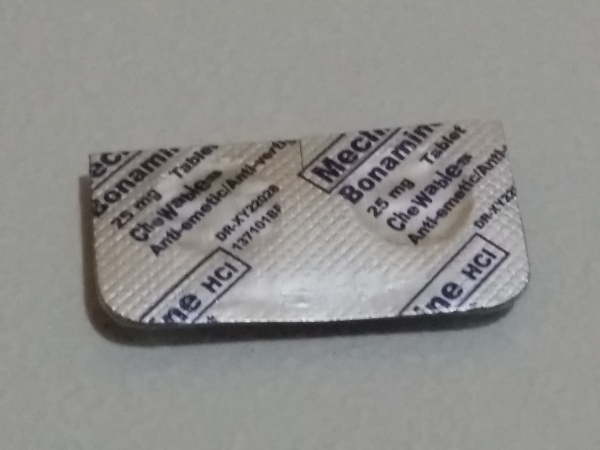I seem to get seasick fairly easily. I am usually fine getting into the ocean from a pier or getting out to a dive spot by boat. Well, I start feeling it, but is not yet too bad before the dive starts.
After a dive I usually have some degree of seasickness, mostly moderate-to-severe. I usually recover fairly quickly once on land.
The worst part is immediately upon surfacing. I am relatively OK at the safety stop and above, but by the time I inflate my BCD at the surface I am already nauseous. Getting onto the boat doesn’t help, since it is usually rocking pretty good.
So I asked at a pharmacy if they had anything for motion sickness, and they gave me Meclizine Bonamic 25mg. I have used it a few times now, and it really seems to help.
I also drink a can of Coca-Cola, which I blogged about here: https://scubadivingzero.wordpress.com/2018/01/09/motion-sickness/
Also, thanks to a YouTube video by Lake Hickory Scuba, I leave my gear on and board the boat quickly.
So Meclizine Bonamic 25mg + Coca-Cola + keeping my gear on = much less nausea. If anyone else suffers, I hope this helps.
Disclaimer: consult a doctor before self-medicating.















